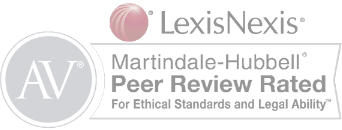Hostile Work Environment Comprises Three Types of Harassment


Verbal/Written Harassment
Verbal and written harassment, manifesting as offensive or intimidating language, are powerful tools that can insidiously construct a hostile work environment. These forms of harassment take various forms and can impact victims in profound ways.
The spoken words can be classified into several categories, which include:
- Discriminatory Remarks: Derogatory comments directed towards an individual’s race, religion, age, sexual orientation, or any other personal attributes, leading to a feeling of alienation or marginalization.
- Offensive Humor: Jokes or comments that belittle, demean, or ridicule an individual or a group, creating an uncomfortable and degrading work atmosphere.
- Threats and Criticisms: Constant criticisms, personal attacks or threats, either direct or veiled, aimed to undermine an employee’s confidence and mental peace.
The written forms of harassment are no less harmful and encompass:
- Inappropriate Communications: This could include offensive or derogatory content in emails, text messages, letters, or memos. These communications could be direct, circulated among colleagues, or even disseminated publicly.
- Social Media Misconduct: Harassment extends beyond the physical boundaries of the office. Offensive or slanderous posts on social media platforms targeting employees can contribute significantly to creating a hostile environment.
The consequent stress and anxiety from enduring such harassment can have severe implications. It not only affects work performance but also leaves a lasting impact on the victim’s overall well-being, escalating to physical health problems, insomnia, and reduced self-esteem.
Physical Harassment
Physical harassment, despite its less frequent occurrence, represents a blatant form of workplace hostility. It refers to any form of unwelcome physical contact or threats thereof. The manifestations of physical harassment can span across a broad spectrum, including:
- Unwanted Touching: This can range from seemingly innocuous actions such as patting, brushing up against someone, or constant encroachment of personal space, to more invasive forms of unwanted touching that make an individual uncomfortable.
- Physical Intimidation: Physical intimidation can involve actions such as standing unnecessarily close to instill fear, cornering someone, blocking their path, or any form of physical aggression.
- Violent Behavior: More severe forms of physical harassment may include acts of violence like hitting, shoving, slapping, or other forms of assault, which can cause immediate physical harm and long-term psychological distress.
- Inappropriate Physical ‘Jokes’ or Pranks: A category that might be shrugged off under the guise of camaraderie but can make employees feel targeted, ridiculed, or uncomfortable.
Visual Harassment
Visual harassment, a form of harassment that frequently flies under the radar, has a significant impact on engendering a hostile work environment. This form of harassment encapsulates various actions and displays, including:
- Offensive Displays: This involves the exhibition of inappropriate images, derogatory cartoons, offensive calendars, or explicit material that can create an intimidating or uncomfortable atmosphere.
- Disturbing Symbols: Displaying symbols associated with hate groups, or those that are intended to marginalize or threaten certain groups based on their race, religion, gender, or other protected attributes.
- Unsettling Gestures: This includes inappropriate hand signals, lewd gestures, or any non-verbal behavior that is offensive, threatening, or belittling to others.
- Unwanted Surveillance: Stalking, leering, unwanted staring, or spying on a colleague without their knowledge can also contribute significantly to visual harassment.
The Commitment of John P. Martin, Attorney at Law
Each form of harassment, whether verbal/written, physical, or visual, can contribute significantly to creating a hostile work environment. It is crucial for victims to recognize that they are not alone and that legal help is available.
John P. Martin, Attorney at Law, is committed to aiding those experiencing harassment at work. He stands ready to defend your rights, ensuring your workplace is a space of respect and dignity. With his experience, he can guide you through the legal avenues available to restore peace and fairness to your work environment.
In addition, it is important to note that there is a statute of limitations for filing harassment claims, which means there is a specific time limit within which legal action must be initiated. John P. Martin, Attorney at Law, understands the urgency of these matters and can help victims navigate the legal process efficiently and effectively within the applicable time frame. Don’t hesitate to reach out for assistance and protect your rights.





